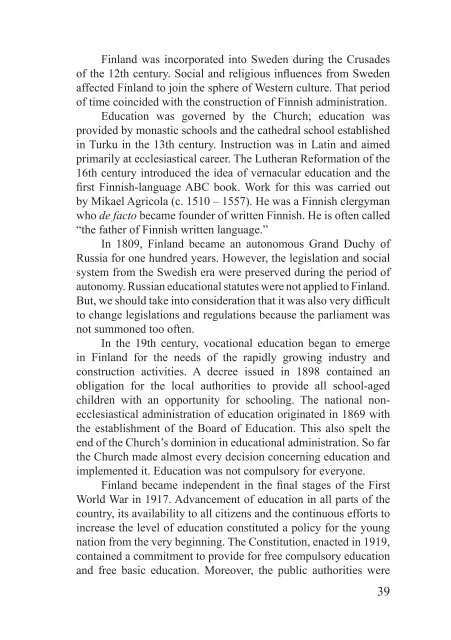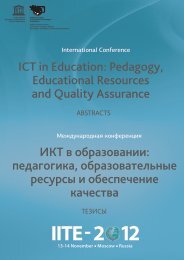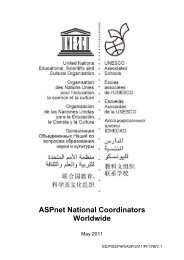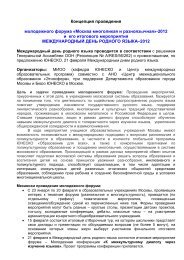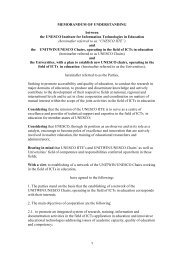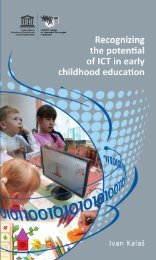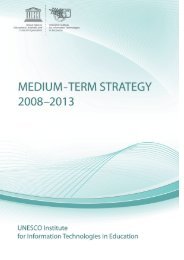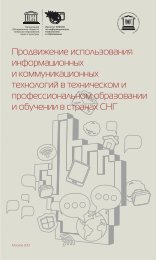ИКТ и качество образования: Ассоциированные ... - unesco iite
ИКТ и качество образования: Ассоциированные ... - unesco iite
ИКТ и качество образования: Ассоциированные ... - unesco iite
You also want an ePaper? Increase the reach of your titles
YUMPU automatically turns print PDFs into web optimized ePapers that Google loves.
inland was incorporated into Sweden during the Crusades<br />
of the 12th century. Social and religious influences from Sweden<br />
affected inland to join the sphere of Western culture. That period<br />
of time coincided with the construction of innish administration.<br />
Education was governed by the Church; education was<br />
provided by monastic schools and the cathedral school established<br />
in Turku in the 13th century. Instruction was in Latin and aimed<br />
primarily at ecclesiastical career. The Lutheran Reformation of the<br />
16th century introduced the idea of vernacular education and the<br />
first innish-language ABC book. Work for this was carried out<br />
by Mikael Agricola (c. 1510 – 1557). He was a innish clergyman<br />
who de facto became founder of written innish. He is often called<br />
“the father of innish written language.”<br />
In 1809, inland became an autonomous Grand Duchy of<br />
Russia for one hundred years. However, the legislation and social<br />
system from the Swedish era were preserved during the period of<br />
autonomy. Russian educational statutes were not applied to inland.<br />
But, we should take into consideration that it was also very difficult<br />
to change legislations and regulations because the parliament was<br />
not summoned too often.<br />
In the 19th century, vocational education began to emerge<br />
in inland for the needs of the rapidly growing industry and<br />
construction activities. A decree issued in 1898 contained an<br />
obligation for the local authorities to provide all school-aged<br />
children with an opportunity for schooling. The national nonecclesiastical<br />
administration of education originated in 1869 with<br />
the establishment of the Board of Education. This also spelt the<br />
end of the Church’s dominion in educational administration. So far<br />
the Church made almost every decision concerning education and<br />
implemented it. Education was not compulsory for everyone.<br />
inland became independent in the final stages of the irst<br />
World War in 1917. Advancement of education in all parts of the<br />
country, its availability to all citizens and the continuous efforts to<br />
increase the level of education constituted a policy for the young<br />
nation from the very beginning. The Constitution, enacted in 1919,<br />
contained a commitment to provide for free compulsory education<br />
and free basic education. Moreover, the public authorities were<br />
39


